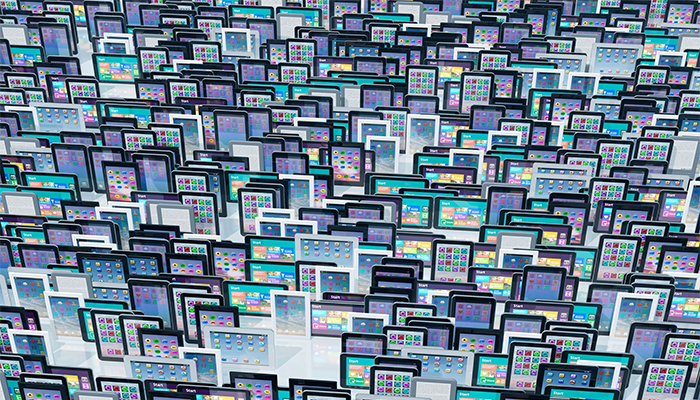 As digital fatigue sets in, readers are waking up to newspapers and news magazines.
As digital fatigue sets in, readers are waking up to newspapers and news magazines.
Think you’re maxed out on digital content now? According to the folks who track these kinds of things, it’s only getting worse.
“We can point our fingers at the 24-hour news cycle,” writes Nu Yang in Editor & Publisher. “We can blame social media. But according to marketing expert Andrew Davis, 17 new Web pages are published every second. If you think about it, said Davis, in a span of five seconds that’s 85 new Web pages getting uploaded to the Internet.”
Wow.
Davis continued, “Just because there is more information available, it doesn’t mean one can consume more.” And that is why he and others believe that “the future of digital is print.”
“With the recent rise of ad-blockers, it shows audiences are unhappy with their digital experiences, and as digital fatigue sets in among consumers, the newspaper industry—and print—is poised for a revival,” Yang explains.
It’s an interesting turnabout that Yang illustrates. After the digital disruption and the fall of paid circulation, news publishers were forced to compete in the digital space for revenue. And now that consumers are becoming much savvier at modifying their viewing experience through ad blocking, that digital revenue model has collapsed.
“To compete with digital giants like Facebook and Google, newspapers have had to bet big on online advertising. Now, ad blocking software is preventing them from taking a piece of the revenue pie. It’s another example of technology once again hindering newspapers,” Yang continues.
What’s next? The first step for many brands is to bar readers using ad blockers; Forbes was one of the first we noticed limiting access to ad blocker users. The other option being presented by publishers is to pay a monthly or one-time fee to view the content.
Still, there’s another option that Yang feels is going underutilized.
“It’s pretty ironic that the biggest treat [sic] to digital advertising now is another digital product; technology that was created to combat other technology,” Yang writes. “It’s tech versus tech, and newspaper publishers shouldn’t have to choose a side. What they need to do is create their own defensive force—all they need to do is look at their print product to find their best weapon.”
Consumers may just be ready for that, too, notes one industry insider.
“People want to step away from the white noise, wanting something a little more nourishing and in-depth and a little less throwaway,” Rob Orchard, Delayed Gratification co-founder and editorial director, is quoted as saying.
Will newspapers follow Newsweek’s lead and become “premium boutique products?” It could happen as more consumers move back toward print to escape the digital fatigue fostered by the ever-increasing amount of non-welcome content.
“With the saturation of news, the toxicity of online harassment, and the amount of poor Web experiences, readers will soon want to come back to print,” Yang concludes. “This resurgence must take place if we want to keep print around for many more years, and publishers can accomplish that by immersing readers—not with virtual reality headsets—but with ink on their hands.”
We’ll be ready for them.

April 10, 2017, 3:21 pm
December 10, 2020, 2:17 pm
December 22, 2020, 9:27 am